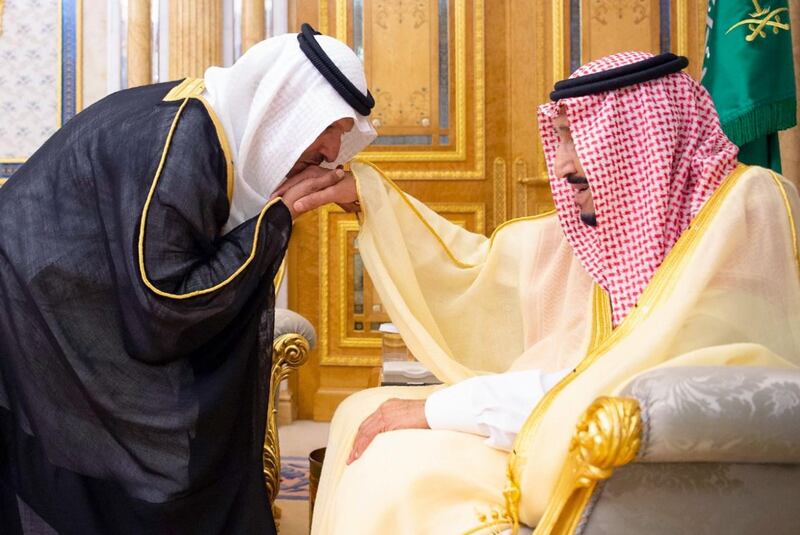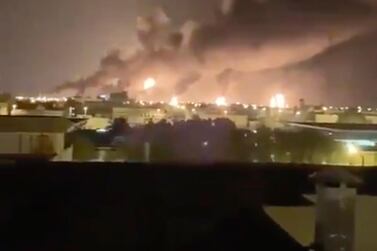Saudi Arabia is facing a major Iran-backed escalation of violence aimed at disrupting its economy in a challenge not seen since the attacks by Al Qaeda on foreign workers more than a decade ago.
Between 2003 and 2006, the authorities fought off hundreds of mostly Saudi militants who had returned from Afghanistan and aimed to bankrupt the kingdom by terrorising the foreign labour force and later undermining morale in the state security apparatus.
The current threat comes from across the kingdom’s borders to the north and to the south – Iran’s militia allies in Iraq and in Yemen, the target of the Saudi-led intervention since 2015.
Both are suspected of attacking Saudi civilian targets, most notably oil infrastructure, tankers and an airport in southern Saudi Arabia, in the past four months.
Most materially damaging was the attack on Saturday on a crucial oil plant, halving Saudi Arabia’s production.
In the 2000s, advanced training and reconnaissance, a mix of tough action and leniency towards militants who handed themselves in, and an enhanced esprit de corps within the Saudi security forces, eventually contained Al Qaeda in the country.
A major state, Iran, stands behind the latest militant threat.
Tehran has been counting on its response to the US withdrawal from the 2015 nuclear deal and Washington's "maximum pressure" policy on Iran, to outlast President Donald Trump, who is up for re-election in November 2020, or force him to back down.
Although the Houthi rebel militia in Yemen claimed Saturday’s attack, US officials said there was no evidence that it was them.
At the same time, there are Iraqi militias dominant in Baghdad’s circles of power willing to do Iran’s bidding.
Washington has opened channels with the Houthis to lure the group away from Tehran through a deal that would end the war in Yemen.
But past policies from the US and others with the Syrian regime, before the 2011 revolt, and with Iraqi militias, failed to dissuade proxies from their controllers in Tehran.
Saudi Arabia tried to woo Iraqi Shiite cleric Moqtada Al Sadr, who leads several militias and casts himself as anti-establishment.
But Mr Al Sadr appeared last week at a religious celebration in Tehran next to supreme leader Ayatollah Ali Khamenei, showing Iran’s widespread influence.
Iran’s rulers are unlikely to approve any Houthi compromise with Saudi Arabia without a major gain for Tehran.
They may be calculating that traditional US allies in the Middle East could become a casualty of Mr Trump’s eagerness to strike grand bargains before the elections.
But Saturday’s attack could also make it difficult for the US to soften its line, in the same way that the Afghan Taliban’s deadly bombing in Kabul this month scuttled talks with Washington.
Although the attacks in Saudi Arabia did not target American interests directly, or the hundreds of American soldiers in the country, they challenge a long-standing US policy of securing Middle East energy supplies.
Oil prices rose sharply at start of trading on Monday, the first day of business in the West since the attack, with Brent benchmark crude gaining 8.7 percent to $65.5 per barrell by mid morning.
But the attack was mainly designed for political purposes. Whatever extra capacity Iran has, it will struggle to put any of it on the market under US sanctions.
There are market worries about the extent of the latest damage to the Saudi oil infrastructure and whether the attack reflects enhanced capability by Iran’s proxies or is a statistical result of having hit Saudi Arabia so often.
US Secretary of State Mike Pompeo says Saudi has been struck almost 100 times.
The immediate objective for Saudi policymakers would be to protect the kingdom’s major assets from further attacks.
In the 2000s, action against domestic militants was accompanied by political action that contributed to their division and eventual containment.
But among Saudi Arabia’s foes in Sanaa and Baghdad, Iran remains a unifying force.







